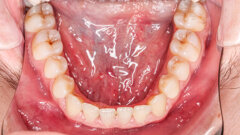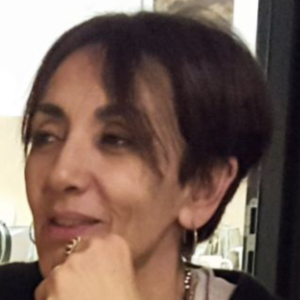Dental Tribune International attended the recent European Aligner Society’s congress on the island of Rhodes in Greece and had the opportunity to speak to Dr Domingo Martín, who is a diplomate of the European Board of Orthodontics and has over three decades of clinical and academic expertise in the field. He gave a lecture titled “Don’t forget we are orthodontists” during the congress, in which he focused on the importance of the fundamentals of orthodontics. In this interview, he expands on the value of sound diagnosis alongside the technological tools now available to the orthodontist.
Dr Martín, why did you choose this title for your presentation?
The title was actually suggested by my colleague Dr Javier Aznar, and I immediately liked it. It reflects something that I often observe—many presentations today barely touch on diagnosis or the core principles we learned at dental school. It’s as if we’ve forgotten the fundamentals.
We now have incredible tools at our disposal that can support accurate diagnosis and treatment planning. Orthodontics is not just about aesthetics or aligning teeth and being satisfied with the result. We must consider the entire stomatognathic system, and thanks to modern technology, this process has become much more accessible. There are no excuses not to diagnose every patient thoroughly.
That’s why I opened my presentation with a case where the teeth were perfectly aligned—but the patient came in with significant problems. It illustrates how focusing solely on the teeth—while neglecting the muscles, joints, ligaments, and craniomandibular region—can lead to serious oversights. We need to treat the entire system, which of course, begins with diagnosing the entire system.
Yet, throughout the three days of presentations, I felt that the primary treatment objective remained simply to align teeth and create a nice smile. But we are more than just teeth. Now you understand why I chose this title: to remind my peers that we are orthodontists—and that means we must diagnose, diagnose, and diagnose.
Moving teeth is simple; anyone can do it. What matters is where you move them and whether the final position is in harmony with mandibular function. Orthopaedic stability means that the teeth are in harmony with the joints, and it should be the treatment goal of every orthodontist.
In an era where everyone is talking about wellness, we must recognise that true wellness is synonymous with orthopaedic stability. When you achieve that, the muscles relax, the bite remains stable, and problems like tooth wear and gingival changes are avoided—resulting in long-term, stable outcomes. That’s real wellness.
Having reference points is essential. In my presentation, I showed tracings and superimpositions (VTO)—the GPS of orthodontics. These tools help us determine where teeth should be, yet they are disappearing from our practice. This is especially concerning in the era of aligners, where you only have one chance to diagnose and treatment plan correctly.
In your presentation, you mentioned that 70%–80% of your initial consultations are retreatments. What are the most common diagnostic oversights you see in these cases, and how can clinicians avoid them?
There are four main reasons why we see so many retreatments. First and foremost is poor diagnosis. If you don’t diagnose properly, you don’t truly know what you’re treating. Simply aligning teeth without understanding the full clinical picture inevitably leads to problems. Orthodontics isn’t just about straightening teeth; it’s about treating the underlying condition.
The second issue is attempting the impossible. Just as some people are born with diabetes, others are born with significant skeletal discrepancies that cannot be corrected with brackets or aligners alone. These are surgical cases. Understandably, many patients wish to avoid surgery, but when we try to manage surgical cases with orthodontics alone, treatment often fails. You must be honest with your patients. If surgery is needed, it is the only path to achieve a proper result. Once again, it comes back to accurate diagnosis—identifying the need for surgery before starting orthodontic treatment.
The third reason is that vertical problems are often overlooked—and you can’t diagnose vertical issues using conventional orthodontic tools alone. You need to go a step further. That means using an articulator—physical or virtual. You need to understand the patient’s true arc of closure, and that often requires stabilisation of the mandible through splint therapy. Only then can you accurately identify vertical discrepancies. Personally, I don’t have failures—I encounter problems, but I find solutions. Every patient who leaves my office is very close to ideal, not perfect—perfection doesn’t exist—but close. Achieving this ideal outcome requires more than straightening teeth. It demands comprehensive multidisciplinary care.
The fourth issue is the blind acceptance of aligner treatment plans. Many dentists simply approve the first treatment plan without critical analysis. In my office, we spend hours reviewing and adjusting these plans. The orthodontist must always be in the driver’s seat. Without a complete and detailed diagnosis, this is extremely difficult—especially with aligners. Once again, it all comes back to the importance of diagnosis.
Ultimately, all four reasons come boil down to a single core problem: lack of proper diagnosis. Without it, you’re not doing orthodontics–you're doing cosmetics.
In your lecture, you spoke about the importance of diagnosing vertical issues and stated that 30% of patients present with them. Why do you think that vertical discrepancies are so commonly overlooked, despite the digital tools available for diagnosis?
Because the body is incredibly good at compensating for vertical discrepancies, making them easy to miss.. That’s why in my presentation I referred to the hidden open bite.
When a patient has a vertical problem, the posterior teeth often lack the space and bone support needed to erupt fully. As a result, this creates occlusal interferences when the mandible attempts to close. But these issues may not be apparent in a routine exam or on basic records.
The key point is that we do have the tools to diagnose these issues; we just need to use them. Whether it’s physical or virtual articulators, splint therapy or digital workflows that include functional analysis, we must train ourselves to recognise what compensations are masking and make full use of all the diagnostic resources available to us.
You noted that some cases shouldn’t be treated orthodontically. What are the main clinical or structural signs that indicate when orthodontics might not be the appropriate solution?
Yes, there are definitely cases where orthodontic treatment alone is not sufficient, especially in patients with significant skeletal discrepancies. For example, when I see a child at 7 or 8 years old with a pronounced Class III pattern or a severe maxillary deficiency, I sometimes have to tell the parents, “I hope I’m wrong, but this looks like a surgical case.”
One of the advantages of our specialty is that we can monitor growth over time. I can follow that child for years to observe how the situation evolves—whether the imbalance improves, responds to orthopaedic intervention, or confirms the need for surgery. In my experience, I’m right in about 90% of these early predictions: these patients will often require orthognathic surgery, especially if the treatment goal includes not just functional stability but also optimal facial aesthetics.
But that doesn’t mean we do nothing in the meantime. In such cases, we start early with presurgical orthodontics to prepare. When the time is right, we operate. This approach shortens treatment duration at a critical stage in a patient’s life.
Sometimes, skeletal issues can be camouflaged with orthodontics and still result in a functional, stable outcome. But when the discrepancy is too large—such as needing to advance the maxilla by 7 or 8 mm—orthodontics alone can't achieve the desired outcome.
Recognising these anatomical limits early is critical. Just as important is being honest–with ourselves and with our patients–about what can and cannot be achieved without surgery.
Topics:
Tags:
RHODES, Greece: The sixth congress of the European Aligner Society (EAS), which took place in late May, began with unexpected movement—not of teeth but of...
Live webinar
Mon. 12 January 2026
9:00 am EST (New York)
Prof. Judith Jones D.D.S; M.P.H., Prof. Kakuhiro Fukai D.D.S., Ph.D, Dr. Bathsheba (Bethy) Turton
Live webinar
Wed. 14 January 2026
12:00 pm EST (New York)
Dr. Théo Laplane, Dr. Robert Gottlander DDS
Live webinar
Fri. 16 January 2026
12:00 pm EST (New York)
Live webinar
Mon. 19 January 2026
1:00 pm EST (New York)
Philipp Kopp, Michael Seeber
Live webinar
Thu. 22 January 2026
2:00 pm EST (New York)
Dr. Nicola M. Grande DDS, PhD
Live webinar
Wed. 28 January 2026
8:00 am EST (New York)
Live webinar
Wed. 28 January 2026
11:00 am EST (New York)
Prof. Dr. Jan-Frederik Güth



 Austria / Österreich
Austria / Österreich
 Bosnia and Herzegovina / Босна и Херцеговина
Bosnia and Herzegovina / Босна и Херцеговина
 Bulgaria / България
Bulgaria / България
 Croatia / Hrvatska
Croatia / Hrvatska
 Czech Republic & Slovakia / Česká republika & Slovensko
Czech Republic & Slovakia / Česká republika & Slovensko
 France / France
France / France
 Germany / Deutschland
Germany / Deutschland
 Greece / ΕΛΛΑΔΑ
Greece / ΕΛΛΑΔΑ
 Hungary / Hungary
Hungary / Hungary
 Italy / Italia
Italy / Italia
 Netherlands / Nederland
Netherlands / Nederland
 Nordic / Nordic
Nordic / Nordic
 Poland / Polska
Poland / Polska
 Portugal / Portugal
Portugal / Portugal
 Romania & Moldova / România & Moldova
Romania & Moldova / România & Moldova
 Slovenia / Slovenija
Slovenia / Slovenija
 Serbia & Montenegro / Србија и Црна Гора
Serbia & Montenegro / Србија и Црна Гора
 Spain / España
Spain / España
 Switzerland / Schweiz
Switzerland / Schweiz
 Turkey / Türkiye
Turkey / Türkiye
 UK & Ireland / UK & Ireland
UK & Ireland / UK & Ireland
 Brazil / Brasil
Brazil / Brasil
 Canada / Canada
Canada / Canada
 Latin America / Latinoamérica
Latin America / Latinoamérica
 USA / USA
USA / USA
 China / 中国
China / 中国
 India / भारत गणराज्य
India / भारत गणराज्य
 Pakistan / Pākistān
Pakistan / Pākistān
 Vietnam / Việt Nam
Vietnam / Việt Nam
 ASEAN / ASEAN
ASEAN / ASEAN
 Israel / מְדִינַת יִשְׂרָאֵל
Israel / מְדִינַת יִשְׂרָאֵל
 Algeria, Morocco & Tunisia / الجزائر والمغرب وتونس
Algeria, Morocco & Tunisia / الجزائر والمغرب وتونس
 Middle East / Middle East
Middle East / Middle East







































To post a reply please login or register